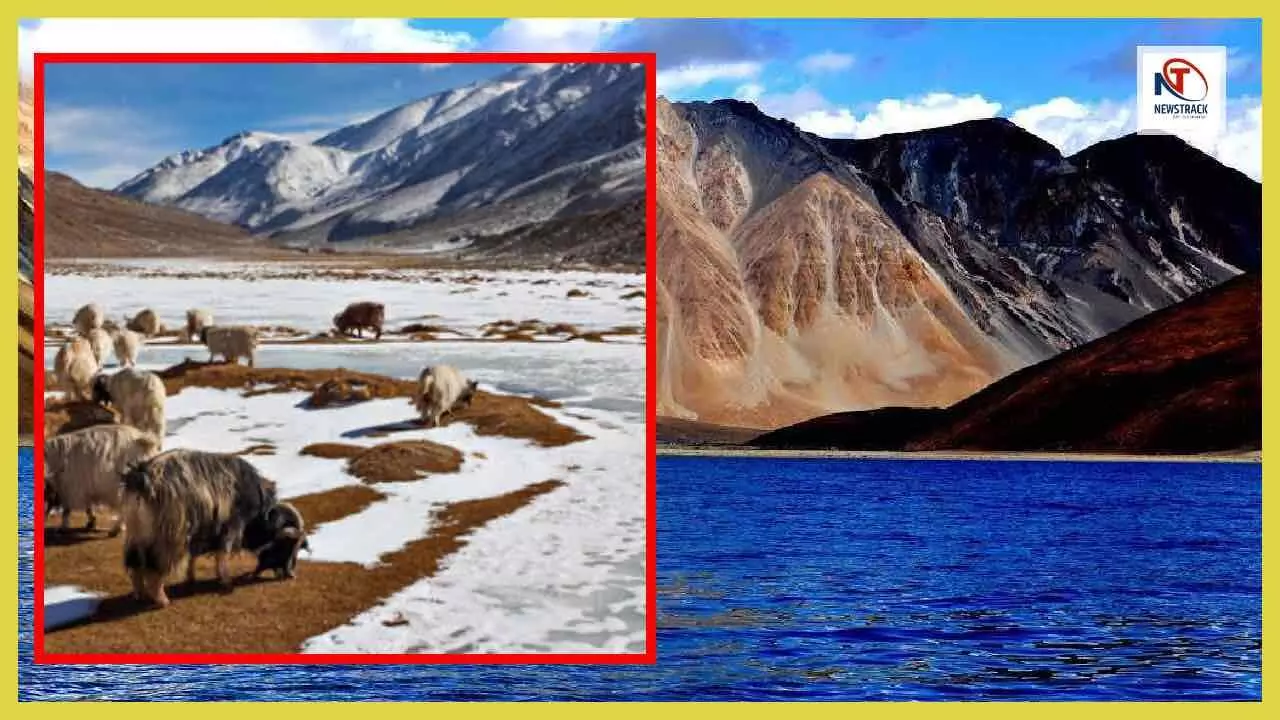TRENDING TAGS :
Changthang Valley Nestled in the Lap of Nature: A Unique Experience
Changthang Valley in Ladakh is not only a natural treasure but also deeply connected to Indian culture, religion, and history.
Changthang Valley in Ladakh
Ladakh, often referred to as the “Valley of the Moon,” is renowned for its extraordinary natural beauty, snow-covered peaks, and rich cultural heritage. Located in the eastern part of Ladakh, Changthang Valley is also known as the “Silent Valley of India.” It has become a major attraction among tourists and researchers due to its serene and mysterious ambiance.
Situated at an altitude of approximately 4,500 meters (15,000 feet), Changthang Valley is a tranquil and naturally pristine place. Its silent and cold atmosphere offers a truly unique experience. Beyond being a tourist destination, the valley holds significant cultural and historical importance, especially relating to pastoral life and Tibetan Buddhism.
Geographical Location of Changthang Valley
Changthang Valley is a high-altitude plateau valley located in the eastern part of Leh district in the Union Territory of Ladakh, near the India-Tibet border. It is part of the vast and rugged region known as the “Changthang Plateau,” which stretches from India into Tibet (China). Its geographical positioning makes it particularly important — representing both the cultural-traditional identity of Ladakh and its strategic significance due to proximity to Tibet.
Major areas within Changthang Valley include Hanle, Koyul, Tso Moriri, Tso Kar, and Pangong Tso, all rich in natural beauty and reflecting the pastoral lifestyle of the indigenous Changpa nomadic tribes. The average elevation of the valley ranges between 4,000 to 5,500 meters (13,000 to 18,000 feet), making it one of the highest inhabited regions in the world.
Topographical Structure of Changthang Valley
Changthang Valley’s topography is remarkably unique due to its natural and geographical diversity. It is a vast, elevated plateau surrounded by the Himalayan and Karakoram mountain ranges. The terrain is harsh, arid, yet breathtakingly beautiful. Its topography can be understood through the following features:
High-Altitude Plateau
The valley is an expansive elevated landform with an average height of around 4,500 meters. The terrain is rough, barren, and dry with thin soil layers, making agriculture nearly impossible. Winters are extremely cold, and even summers remain relatively chilly, making it one of the toughest inhabitable areas globally.
Lakes
The Changthang region is home to both saline and freshwater lakes, which are not only picturesque but ecologically significant. Pangong Tso is the most famous, known for its deep blue waters and extension across the India-Tibet border. Tso Moriri, a freshwater lake, is a designated Ramsar site, while Tso Kar, a saline lake, was historically used for salt production by locals.
Mountains and Passes
Encircled by the Himalayas and Ladakh ranges, the valley is surrounded by high peaks that serve as natural barriers and significantly impact local climate, water sources, and lifestyle. Notable passes include Chang La, which leads from Leh to Pangong Lake, and Marsimik La — one of the world’s highest motorable passes, strategically crucial.
Pastures
The region contains vast open grasslands known locally as “Thang.” These serve as ideal grazing grounds for high-altitude livestock like yaks, sheep, and Pashmina goats. These meadows are the foundation of the semi-nomadic Changpa lifestyle, playing a vital role in local ecology and economy.
Climate and Ecology
Changthang Valley experiences one of the harshest and most extreme climates on Earth. Winters see temperatures plunging below -30°C, while summers remain cool, averaging between 5°C to 20°C. Annual precipitation is extremely low, often under 100 mm, making it a cold desert region.
Ecologically, Changthang is highly sensitive and boasts unique biodiversity. Its fragile ecosystem is quickly affected by human activity. Several rare and endangered species inhabit the area — notably the Kiang (Tibetan Wild Ass), found only here in its natural habitat. Other notable species include the elusive Snow Leopard, and rare birds like the Black-necked Crane and Bar-headed Goose, enriching the region’s biodiversity. These features make Changthang ecologically invaluable.
Geopolitical and Environmental Significance
Changthang Valley holds immense geopolitical importance due to its strategic location along the India-China border. Hence, the area has a strong Indian military presence and remains under constant surveillance for national security.
Ecologically, it is a biodiversity hotspot that offers refuge to several rare Himalayan species. The region’s tough terrain also houses a culturally resilient community — the Changpa people — whose semi-nomadic lifestyle and symbiosis with nature reflect the possibility of sustainable living even in extreme conditions.
Cultural Significance of the Changthang Valley
The valley’s culture is primarily rooted in Tibetan Buddhism. Local residents adhere to Tibetan traditions and religion, leading lives centered around agriculture, animal husbandry, and spiritual practices. The valley is dotted with monasteries and dharmashalas where monks meditate and offer prayers, symbolizing peace and prosperity.
Life in Changthang is simple and tranquil. Residents live in harmony with nature, relying on traditional methods and sustaining themselves through herding and small-scale agriculture. Tibetan murals, ancient garments, and rituals define the cultural ethos of the valley, making it both mysterious and deeply fascinating.
Historical Context of the Changthang Valley
Historically, Changthang Valley held significant importance as a trade route between India and Tibet. The inhabitants primarily followed Tibetan Buddhism, and over time, the valley evolved into a religious and cultural hub. Some parts of the valley are strategically used by the Indian Army due to their importance in border security.
The historical conditions and rich legacy have made Changthang a heritage zone of immense value. The monasteries and spiritual sites are not just important for Buddhists but also for tourists and researchers worldwide.
Tourist Attractions of Changthang Valley
The valley’s unparalleled natural beauty and tranquility make it a major tourist destination. Its prime attractions include Pangong Lake and Tso Moriri Lake — serene, scenic sites that offer unforgettable experiences. The snow-covered hills, calm atmosphere, and rare wildlife species create a breathtaking spectacle.
Pangong Lake, located near the India-China border, is perhaps the most famous attraction in Changthang. Known for its crystal-clear blue waters and stunning landscapes, it draws travelers year-round. Tso Moriri, a peaceful freshwater lake, also captivates visitors. Activities like camping, trekking, and birdwatching are highly popular here.
How to Reach Changthang
Changthang Valley is a high-altitude, remote region in eastern Ladakh, famed for its stunning blue lakes and Tibetan culture. To visit, travelers must first reach Leh, Ladakh’s capital, which is well-connected to Delhi and Srinagar by air.
From Leh, two major road routes lead to Changthang:
-
Via Chang La Pass to Pangong Tso
-
Via Chumathang and Nyoma to Tso Moriri Lake
Since this area lies near the India-Tibet border, an Inner Line Permit is mandatory, which can be obtained from the DC Office in Leh or online.
Best Time to Visit Changthang
The ideal time to explore Changthang Valley is between June and September. During this period, the weather is relatively clear and favorable for travel. Summer melts the snow, opens up roads, and reveals the full splendor of lakes like Pangong Tso and Tso Moriri.
This season also offers glimpses into local festivals, yak races, and the traditional customs of the Changpa tribe, providing travelers with a culturally immersive experience.


